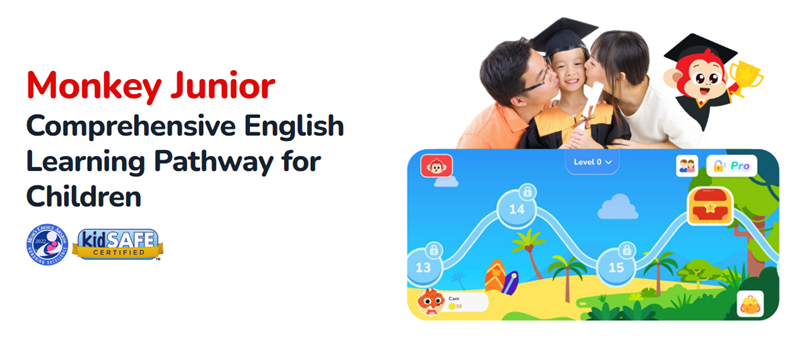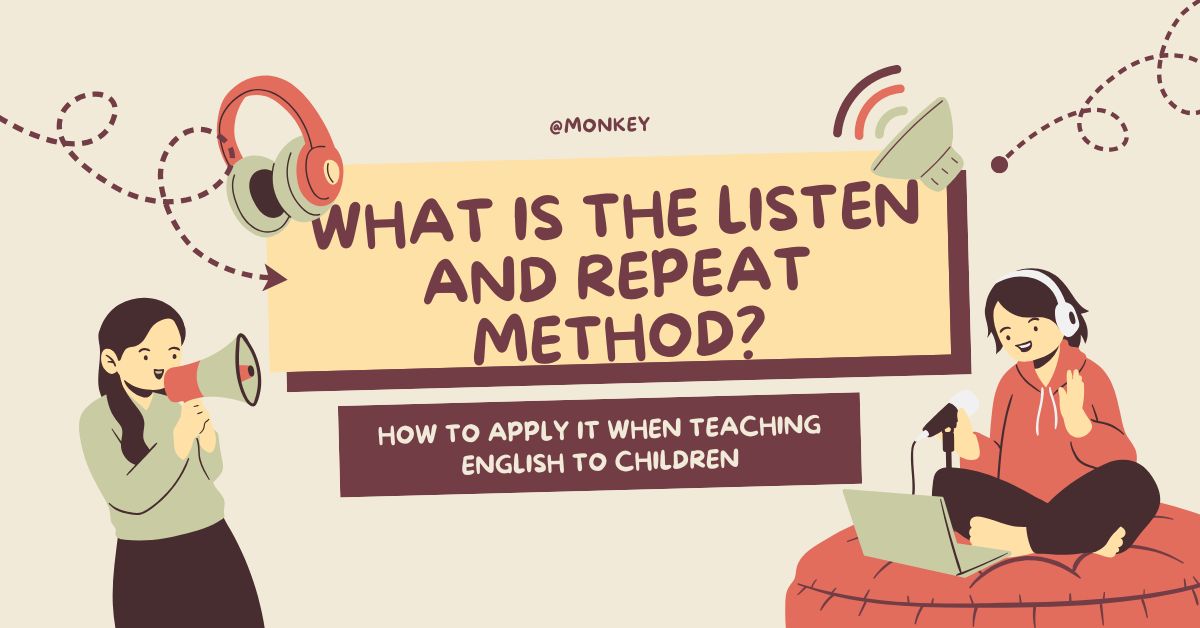Are you a Thai student or professional looking to boost your English communication skills for the global workplace? You've likely heard about the TOEIC certificate and wondered "What is TOEIC?". This comprehensive guide is designed specifically for you! We'll demystify the TOEIC exam, covering its structure, current fees in Thailand, and most importantly, practical tips and strategies to help you achieve a high score and open doors to new career opportunities.
What is TOEIC?
TOEIC stands for Test of English for International Communication, a globally recognized standardized exam designed to assess English proficiency. It is widely used by companies and educational institutions to evaluate listening and reading skills in professional settings.
In addition to the traditional Listening and Reading test, there is also a Speaking and Writing TOEIC test that measures communication abilities more comprehensively. TOEIC scores range from 10 to 990 and remain valid for two years from the test date.
Benefits of having a TOEIC certificate
Having a TOEIC certificate significantly enhances your job prospects by proving your English proficiency to employers. Many multinational companies and international organizations consider TOEIC scores a key requirement during the hiring process.
In addition to career advancement, the TOEIC certificate also opens doors to academic opportunities and study abroad programs. It demonstrates your ability to communicate effectively in English in global environments, helping you succeed in both education and business.
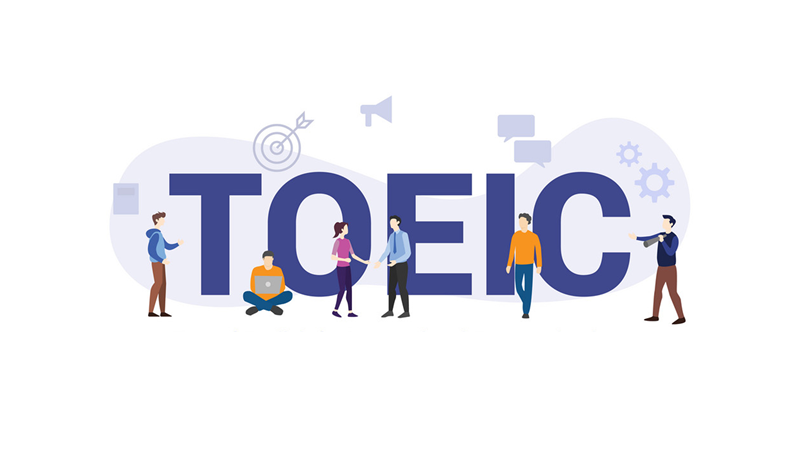
TOEIC exam structure (Listening & Reading)
The TOEIC Listening & Reading test is a multiple-choice, paper-based (or sometimes computer-based) exam designed to assess English proficiency in a workplace context. It consists of 200 questions divided into two main sections: Listening and Reading. The total test time is approximately 2 hours.
Here's a detailed breakdown of its structure:
|
Test Section |
Number of Questions |
|
Listening (100 questions) |
|
|
Photographs |
6 questions |
|
Question and Response |
25 questions |
|
Conversations |
39 questions (13 conversations, 3 questions each) |
|
Short Talks |
30 questions (10 talks, 3 questions each) |
|
Reading (100 questions) |
|
|
Incomplete Sentences |
30 questions |
|
Text Completion |
16 questions |
|
Single Passages |
29 questions (10 passages, 2-4 questions each) |
|
Multiple Passages |
25 questions (5 sets, 5 questions each) |
TOEIC exam structure (Speaking & Writing)
The TOEIC Speaking & Writing tests are distinct from the Listening & Reading test and are designed to directly assess productive English skills used in the workplace. These tests are computer-based, meaning you'll speak into a microphone and type your written responses.
Here's a breakdown of the structure for each section:
|
Test Section |
Number of Questions |
Scoring Scale |
|
Speaking Test |
11 questions |
0 to 200, divided into 8 proficiency levels |
|
Read a Text Aloud |
2 questions |
|
|
Describe a Picture |
2 questions |
|
|
Respond to Questions |
3 questions |
|
|
Respond Using Information Provided |
3 questions |
|
|
Express an Opinion |
1 question |
|
|
Writing Test |
8 questions |
0 to 200, divided into 9 proficiency levels |
|
Write a Sentence Based on a Picture |
5 questions |
|
|
Respond to a Written Request |
2 questions |
|
|
Write an Opinion Essay |
1 question |
How to calculate TOEIC test score?
The TOEIC test has a maximum score of 990, divided equally between the Listening and Reading sections. Each section is worth up to 495 points, and your total score is the sum of both parts.
In addition to Listening and Reading, the TOEIC exam also offers separate Speaking and Writing tests. Each of these is scored on a scale from 0 to 200 and is designed to evaluate practical communication skills in a business context.
The Speaking test includes tasks such as reading aloud, describing images, and expressing opinions, while the Writing test focuses on sentence building, email responses, and essay writing. These modules are especially valuable for companies that prioritize strong English communication.
After taking the TOEIC test, your score report is usually available the next day if you take the test from Monday to Thursday. For Friday or Saturday test takers, results are typically ready by the following Tuesday, and you can request postal delivery if needed.
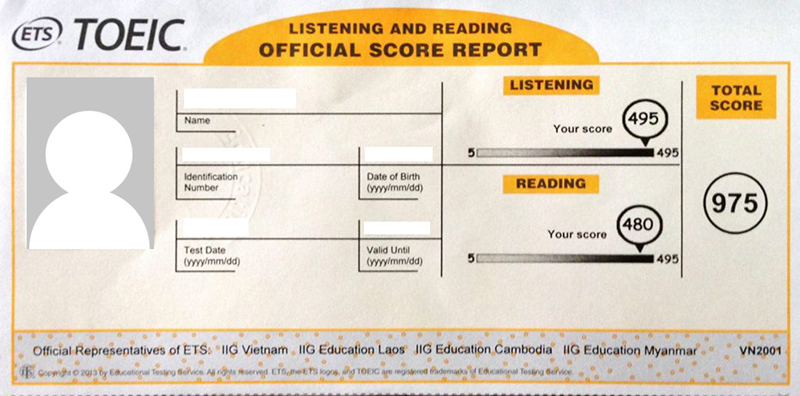
TOEIC exam fees and schedule in 2025
In 2025, the official TOEIC test fees in Thailand are managed by the Center for Professional Assessment Thailand, the authorized ETS representative. The standard fee for the Listening and Reading test is 1,850 Thai Baht, usually payable in cash on the test day, with a small extra charge if you request results by mail.
If you miss your test or arrive late, a penalty fee of approximately 500 Baht may be added to your next registration. Always confirm your appointment and arrive early to avoid any extra charges.
CPA Thailand offers regular TOEIC test sessions in Bangkok and Chiang Mai throughout the year. Most tests are held on Saturdays, and additional testing dates may be available in provinces such as Chonburi and Rayong during open testing events.
For the most accurate test schedule, visit the CPA Thailand website or contact their call centers directly. Booking in advance is strongly recommended due to limited seat availability at some locations.
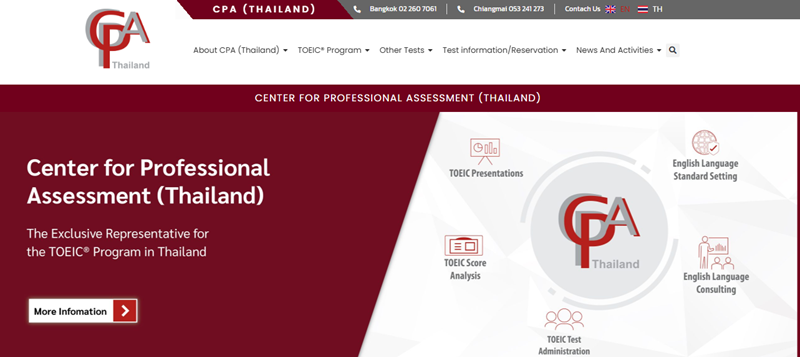
Tips to get high score in TOEIC exam
Achieving a high score on the TOEIC exam requires a combination of strong English skills, familiarity with the test format, and effective test-taking strategies. Here are comprehensive tips to help you excel:
-
Focus on building vocabulary related to business, travel, office communication, and common TOEIC topics
-
Practice listening to English audio materials daily to improve your comprehension and speed
-
Take full-length TOEIC practice tests to familiarize yourself with the format and time limits
-
Read English articles, reports, and emails to strengthen reading skills and understand text structures
-
Learn to identify keywords in both questions and answers to save time during the test
-
Review grammar rules regularly, especially sentence structure, verb tenses, and prepositions
-
Practice speaking and writing in English if you plan to take the Speaking and Writing tests
-
Set a study schedule and stick to it to maintain consistency and reduce last-minute stress
|
While preparing for the TOEIC exam with practice tests and vocabulary lists, parents should also build a strong English foundation for their children from an early age. The earlier a child is exposed to the language, the better their listening, speaking and comprehension skills develop. One of the most trusted tools for early language learning is Monkey Junior. Monkey Junior is an English learning program with a comprehensive roadmap, designed specifically for children aged 0 to 11. It helps develop all four core skills: Listening - Speaking - Reading - Writing through over 3000 vocabulary words, 4000+ interactive activities, 100 sentence patterns, and 60 storybooks. The content is age-appropriate, engaging and scientifically structured.
The app also features AI voice recognition, Handwriting, and interactive videos, helping children speak accurately, write confidently, and build natural language reflexes. With just 3-7 minutes of learning per day, Monkey Junior makes it easy to create a consistent learning habit without pressure. If you're looking for a tool that will help your child master English from the ground up, and later confidently conquer exams like TOEIC, then Monkey Junior is the perfect start. |
By now, you should have a clear understanding of what is TOEIC and how this valuable certificate can enhance your profile as a Thai professional. We've walked through the exam's components, discussed the relevant fees, and provided actionable tips to help you prepare effectively. Start your TOEIC journey today!




.png)
